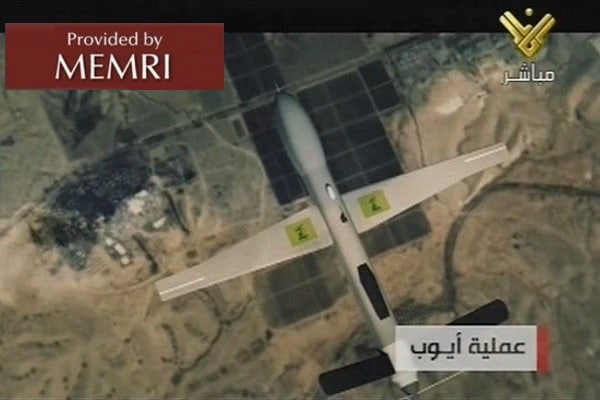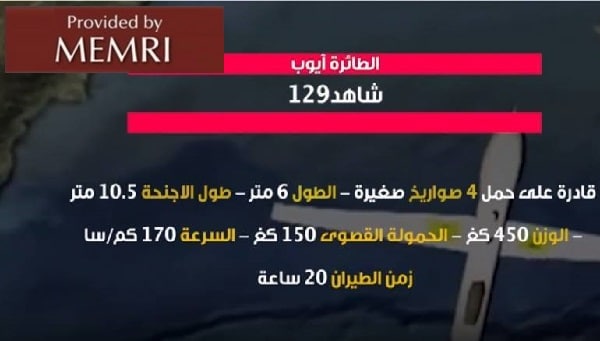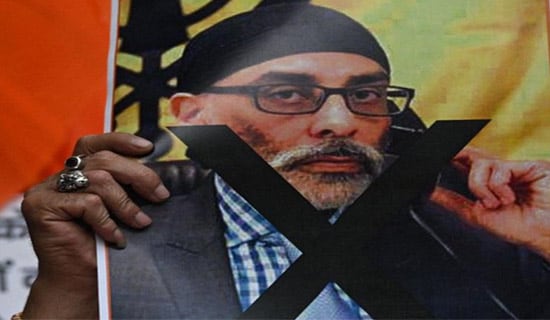On February 12, 2018, two days after an Iranian drone entered Israeli airspace on February 10, 2018, the Syrian opposition website Zamanalwsl.net published an article reviewing the types of drones that Hizbullah has in its possession. The website stated that the information came from a secret study conducted by former officers of the Syrian regime army whom the regime sent to train Hizbullah personnel.[1] The website also posted a video on YouTube with the same information.[2]

Hizbullah "Ayoub" drone (Source: Almanar.com.lb, October 28, 2012.
It should be noted that this is not the first time Zamanalwsl,net has revealed military information about elements involved in the fighting in Syria; in January 2018, it published the findings of a study about military air bases belonging to foreign forces in Syria.[3]
The following are translated excerpts from the Zamanalwsl article about Hizbullah drones.
"Al-Mersad 1 Drone, Iranian name is Muhajir-2, is Hizbullah's first drone. It acquired it in 2002; its weight is 85 kilos; its flight range is 50 km; the maximum altitude it can reach is 3,300 meters; its maximum time aloft is 90 minutes; its maximum speed is 200 km/h. This drone lands on wheels but requires a parachute to land safely. It is produced by the Iranian company Al-Quds. [Hizbullah has] four such drones for surveillance and another two for training purposes.
"Al-Mersad 2 Drone, [Iranian name is] Muhajir-4 – Hizbullah has had it since 2003, and used it during the war in 2006. The difference between it and the Al-Mersad 1 is that [the Al-Mersad 2] is equipped with internal skis instead of wheels. It is launched from a launching pad and lands with a parachute. Hizbullah has eight of these drones and four launching pads (Israel downed one of these drones).
"Ayoub Drone, Iranian name Shahid 129. Hizbullah used it deep in Israel['s territory] in 2012 and then again in 2013. At the time it [its use] caused many reactions, due to its ability to fly long distances. The plane can carry four small missiles; it is six meters long and has a wingspan of 10.5 meters; its weight is 450 kilos; it can carry up to 150 kilos of cargo; it can reach a speed of 170 km/h; it can fly for 20 hours; its range is up to 450 km and it can reach an altitude of 18,000 feet. Hizbullah currently has three such planes after Israel downed one of them (it [previously] had four such drones).
SUPPORT OUR WORK


Stats for the Ayoub drone, from the drones video shared by Zamanalwsl.net. (Source: zamanalwsl.net, February 12, 2018)
"Maarab Light Drone, a small and light Iranian Yaser plane, has bolstered Hizbullah['s arsenal] since 2006. However, the number [of drones of this model] doubled during Hizbullah's involvement in Syria. Today it has eight such drones.
"Small Drones, made in China. Hizbullah acquired dozens of these due to their low price (the most expensive among them costs no more than $1,000). In addition to their surveillance capabilities, they can carry small bombs. Hizbullah used such drones above the town of Khalsa in Aleppo. The Islamic State (ISIS) also used them.
"Bombs used with Small Drones – MCD-2 model bombs manufactured in China. Similar to one of the types used by ISIS... The first Hizbullah attack in Syria that used drones was in 2014, in the western Qalamoun region.
"Ababeel Suicide Drones – drones that can carry explosives with effective weight, and that collide with a target and explode. Hizbullah has about six drones of this type; they can carry 21 kilos of explosives.
"Rami 1 Suicide Drone – these are the Iranian Raad-1 suicide drones. [Hizbullah has] 10 such drones. These drones are launched from the same bases as the Al-Marsad 1.
"Launch Bases For Drones That Enter Syrian Airspace
"A runway, area for takeoff, and command station were built in the northern area of the town of Iaat in the Beqaa Valley. An old, abandoned landing strip there was renovated, and a Hizbullah base was established there, while a command and control station for drones was set up nearby. Another landing strip was also prepared for Shahid-29 [sic] drones about 10 kilometers south of the town of Hermal. The planes are stored in a large storeroom about 2.5 kilometers west of the landing strip, to conceal them from Israeli surveillance."
[1] Zamanalwsl.net, February 12, 2018.
[2] Youtube.com/watch?v=IlPMPuYgT-c, February 11, 2018.
[3] See MEMRI Special Dispatch No. 7286, Studies By Arab Researchers Of Distribution Of Foreign Bases Across Syria, January 18, 2018.




